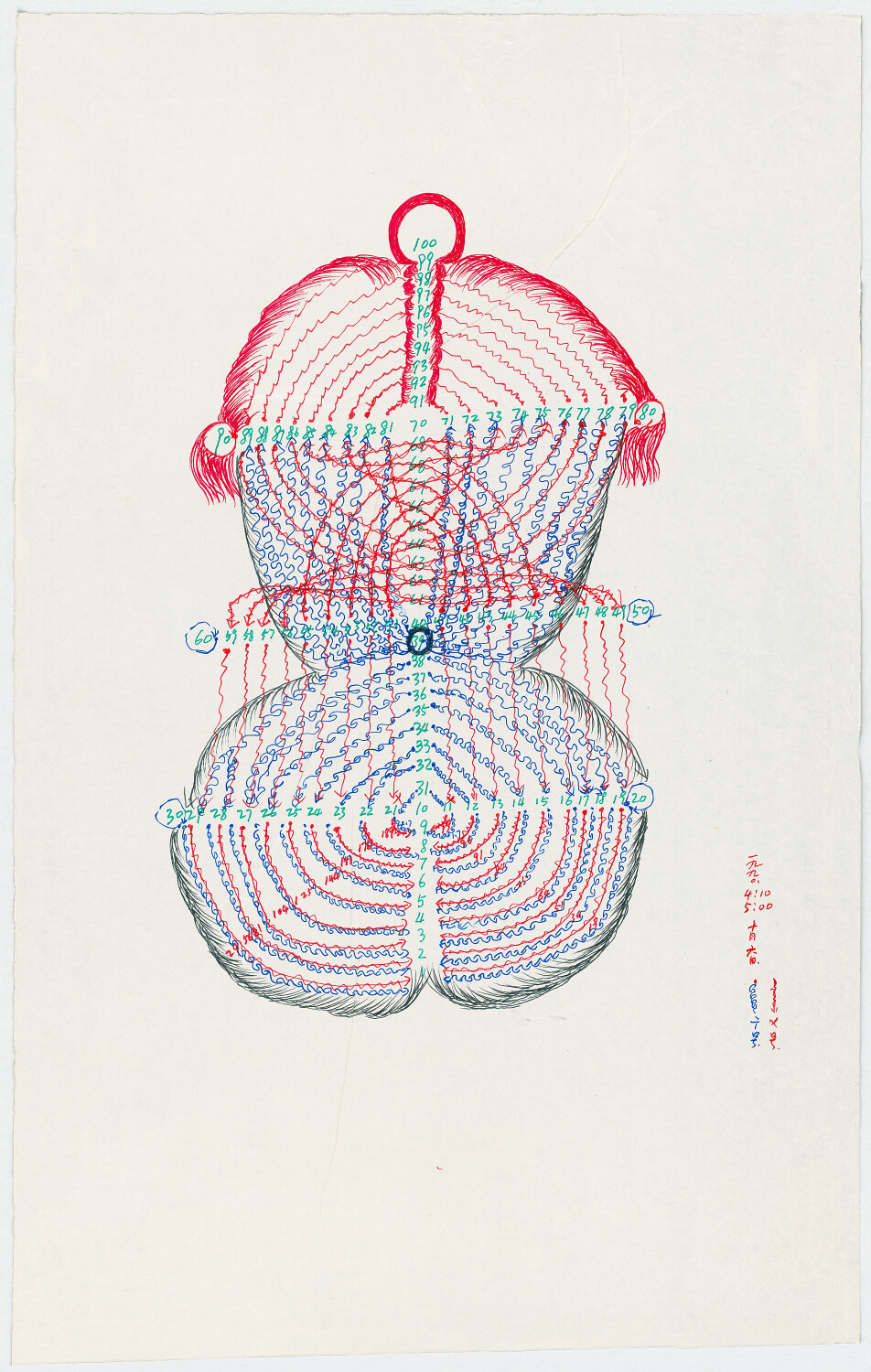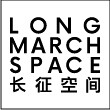Cosmic Meridians
January 7–March 26, 2023
Middle First St. 798 Art District, 4 Jiuxianqiao Road, Chaoyang District
100015 Beijing
China
Hours: Tuesday–Sunday 10am–6pm
T +86 10 5978 9768
F +86 10 5978 9764
lm@longmarchspace.com
Long March Space is presenting Guo Fengyi: Cosmic Meridians, curated by Wang Huan. According to Guo, her ways of working consist of three steps: write down the question, start to paint, and let the images emerge. If Guo Fengyi, as she claims, “I draw because I do not know, I draw to know”, then who is the one she has longed for to give out an answer? This question almost summons back an ancient shamanic scene that connects the land and the heaven, making it possible to rewrite Guo’s set of movements into “place the request, launch the ritual, and let the divine response appear”. Such a rewriting somehow makes unusual the fact that Guo looks like an “untimely” psychic; seemingly, those images are genuinely the answers she gave through divinations. Obviously, these images have failed in the corresponding relationship between “words and things”, with the sacred icons no longer sacred and the landscape no longer recognisable. To put it another way, Guo Fengyi’s psychic-like painting practices do not remind beholders of the decent and manifestation of a deity, as experienced in many existing religions; instead, they constitute an atmosphere of self-religionisation, dispersed in the air and stimulating the senses continuously.
Hetu and Luoshu, two mythical divination schemes from ancient China, appear recurrently as critical themes and references in Guo Fengyi’s practices. In fact, both images are systems of deduction derived from the pre-modern cosmology of ancient China concerning astrological changes in the universe, while Guo’s methodology is more like to observe and identify the logic and order of how the world works through self-constructed laws.
In this light, this exhibition borrows the divination rules of Luoshu. Using the actual orientation of Long March Space with its eight pillars zoning the exhibition space, it divides 45 pieces of paintings into nine groups according to the various key concepts embedded and locates them in nine positions. The nine key concepts are independent of but interpret each other, and the content of the paintings ranges from practicing qigong to cosmology, from The Book of Changes and Taoism to history and culture, and from the numbers of the human body to neurological points. Enlightenment, cognition, land, embryos…All these seemingly irrelevant objects return to a “question of perception”.
To paint like this, perhaps, is Guo Fengyi’s only and final self-expression. We must, however, realise that perception is the same as time in terms of restless changes. Folk art or art brut, modern art or contemporary art, Guo is never a “reasonable experience” that complies with one single system of rules. Notably, most of these paintings were created in the 1990s, when contemporary art discourse was still vague in China. In a time when every breath of air was still filled with the lingering fragrance of the socialist utopia, the answer given by Guo Fengyi was a marked discord of the time. Thereupon, to talk about Guo’s paintings is not only to render a type of painting, a kind of method of reading, or the legitimacy of a sort of art; her paintings are also an accidental phenomenon that never leaves aside its many contextualisations, including the social background, historical context, political situation, and cultural wrestling. More importantly, her paintings inspire us to talk about the way to act in a world of constant conflicts and changes.
Guo Fengyi (1942–2010, Xi’an, China) is a self-trained female artist whose artistic practice articulates a particular journey of spiritual and metaphysical significance, belonging to an older generation whose embrace of Chinese folk culture imparts a unique knowledge of history, myth, and mystery.
Wang Huan is a Beijing-based writer, critic and curator. He is the co-founder and chief editor of GENERAL manual. In 2018, he won the first prize of the fifth International Awards for Art Criticism (IAAC). In 2019, he won the PSA Emerging Curators Project. And he published the book NOTHING LEFT BUT WORDS and Wushu Xiuci as the chief editor.









